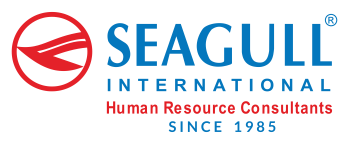Talent Management and Organisational Performance:
Dr. Sureshkumar MadhusudhananChairman & Managing Director, Seagull International Group

The link between "talent management" and "organizational performance" is undeniably strong. However, figuring out how to implement talent management strategies to sustain success remains a challenge. Nations understand that their human capital is essential to the success and growth of their businesses and societies. These nations are distinguished by their cultural sophistication, economic prosperity, technical advancements, and willingness to embrace and adapt to new ideas and methods. Research into "talent management" and its impact on "organizational performance" has been facilitated by the more developed state of organizations in the industrialized world.
Organizations consider talent management a key matter. In addition to recruiting, developing, and retaining talent progressively, these have become major aspects of economic and competitive profit for the organization. Talent management is the most prominent challenge for the performance of an organization. The development of talented employees can go a long way for the organization to face challenges and competitions.
According to Thunnissen and Gallardo, the key aspects and challenges in the research prospects pertaining to talent management were studied using 174 peer-reviewed journals from 2006 to 2017. The study revealed incoherent and diverse communities stifled with newcomers, lack of transparency in defining research methodology in the context of talent management, carelessness in relocating and reshaping core aspects related to talent management, inappropriate research designs, inability to trace respondents of the research, less academic interest in defining core aspects, and inadequately embedded context related to talent management research as major challenges encountered while setting up strategic aspects related to it. Inadequate recognition of organizational behaviour and lack of awareness also influence key concepts related to the formation and execution of talent management initiatives across multiple organizations irrespective of their scale of operations.
As per the case study conducted by Dhiman (2018) about 50 employees working at INFOSYS, Chandigarh, to identify various gauntlets and strengths in the context of talent management programs, the organization introduced the program to enhance employer-employee relationships, create a working ambiance for employees, and enable them to overcome cumbersome activities. The study highlighted the lack of job security on the part of employees, the inability on the part of domestic Human Resource Managers to retain talented employees, a tough competitive environment at the global level, complexity of global operations, lack of compliance with technological transformations, poor practices at the organizational level, improper consortium with cultural aspects, and the cost of failure born in the dynamic environment. Moreover, the study has also stressed the formalization of the leadership development process by engaging managers as well as alignment of the leadership programs with business strategies.
Industry professionals such as founders, human resource professionals involved in hiring, hiring managers, and consultants have been considered as samples for this research. It is equally important to know the employers' perspectives about the effectiveness of practices and strategies followed by them. Besides founders as employers, human resource professionals, and hiring managers have been included, as they are often a key part of the management team, responsible for hiring in start-ups. They often act as employers and have been involved to know their viewpoints on hiring practices. Owing to the sensitive nature of certain questions, anonymity has been assured to the respondents to gather honest responses and opinions. Any explicit data that might identify the respondent was not sought. The instrument for data collection was formulated through a literature review and with the support of data compiled from a pilot study. Content validity of the instrument was established by a panel of experts that comprised a mix of academicians and industry experts.
India is transforming into one of the fastest-growing economies. Skill development and job creation have become natural tools for sustainable growth. The Government of India and various State Governments are focusing more on these areas to leverage the demographic dividend. The Government of India is implementing numerous skill development and training programs under the Ministry of Skill Development & Entrepreneurship.
The biggest asset of India is its 1.42 billion population and vast human resource. India is one of the youngest nations globally, with an average age of 28.3 (considering 15-29 years as youth), and more than 64.2% of the population in the working age group. It is expected to marginally increase to 65.1% in 2031. In the next 20 years, the labour force in the industrialized world is expected to decline by 4%, while in India, it will increase by 32%. Developed countries are experiencing an aging population, while India’s growing young workforce can be an asset not just for the country but also for the rest of the world. The fertility rate in India is 2.57, while in Europe, it is 1.5, and in Singapore, it is 0.83. These countries have seen a population decline of 13% per year over the past few years.
Currently, India’s higher education system is the largest globally, enrolling over 70 million students. Unfortunately, very few institutions are in the world's top 100. With over 1000 universities and 51,000 colleges, 3.75 crores are studying in college and 16,2 million complete SSC every year. 9.1 million complete graduation. The Indian education system is currently focused on academic education but is shifting towards skill-based or vocational education, catering to the needs of the skilled workforce, as per the New Education Policy implemented recently. If this mission is successful, India can become the skilling capital of the world.
Conclusion
Strategic analysis of the roles on offer, though presenting good mean values, failed to deliver desired results. Start-ups should improvise on the analysis, which may yield desired results in the identification of the right best-fit talent, retention, and performance. Talent identification criteria should be thoughtfully and strategically framed with the support of SWOT analysis. Through the data, start-ups have been observed to have an inclination for people with good academic backgrounds and those with experience working in reputed groups. Although such incumbents may carry some qualities with them, it is recommended to identify and assess their expectations as well, which may support in retention and improved performance.





